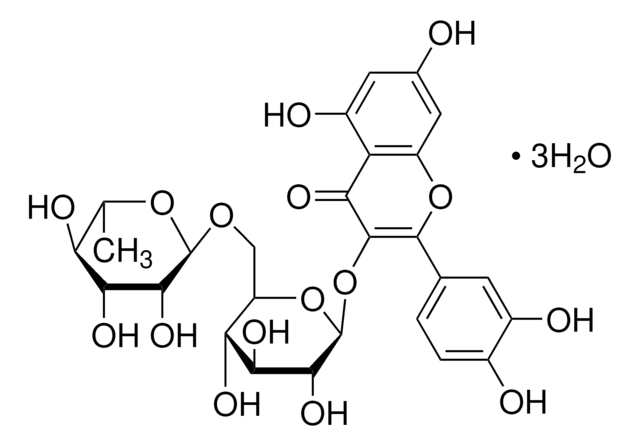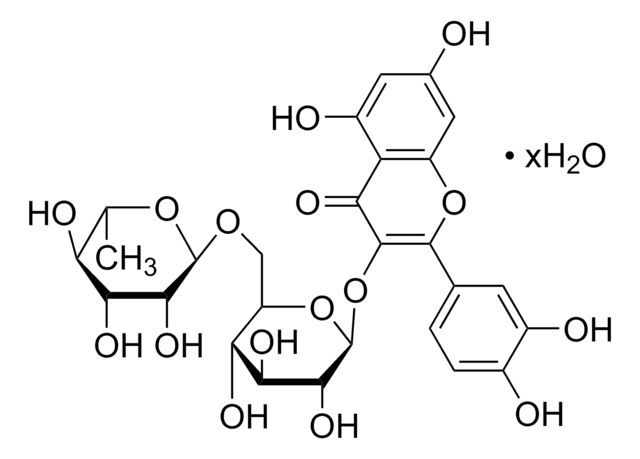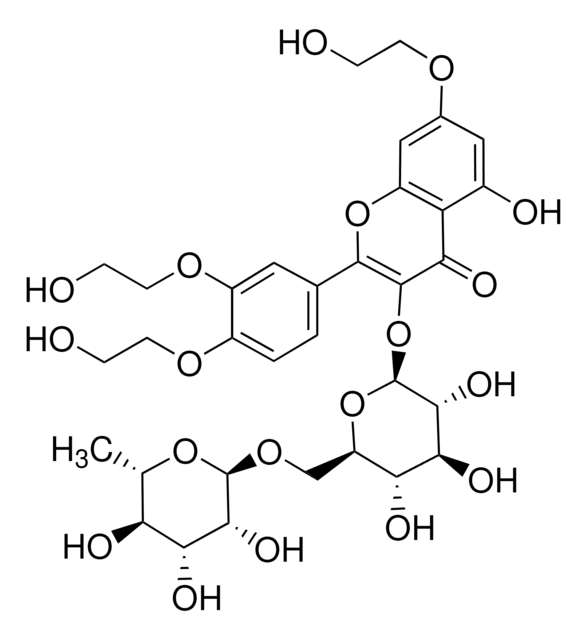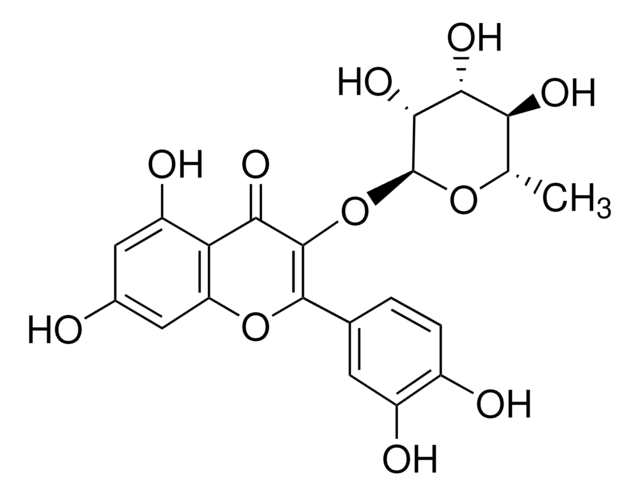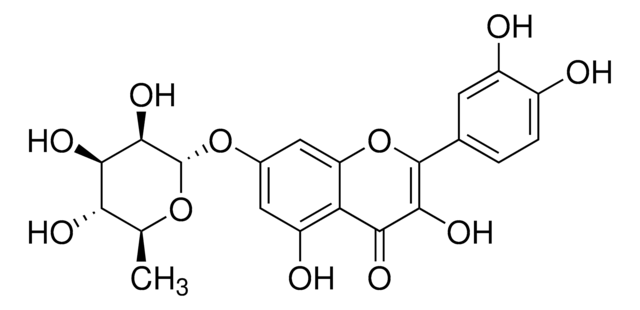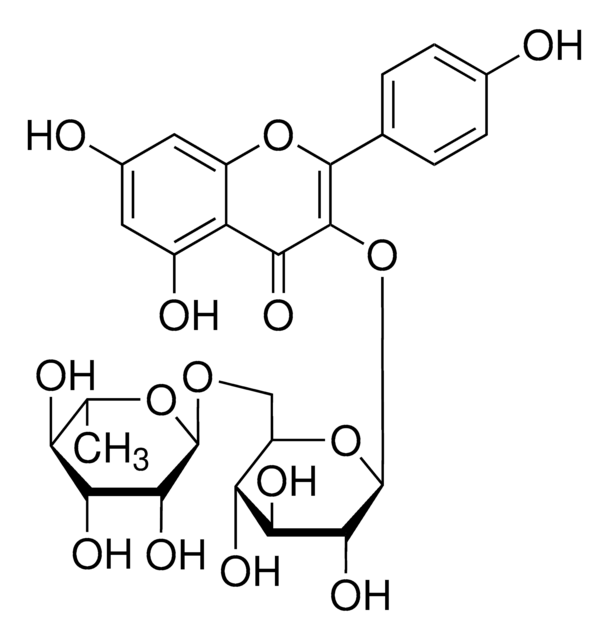PHL89270
Rutin
phyproof® Reference Substance
Sinónimos:
3,3′,4′,5,7-Pentahydroxyflavone 3-rutinoside, 3-Rutinosylquercetin, Globulariacitrin, Ilixanthi, Myrticalorin, Osyritrin, Paliuroside, Phytomelin, Quercetin 3-rhamnoglucoside, Quercetin 3-rutinoside, Rutoside, Sophorin, Tanrutin, Violaquercitrin
About This Item
Productos recomendados
grade
primary reference standard
product line
phyproof® Reference Substance
assay
≥95.0% (HPLC)
manufacturer/tradename
PhytoLab
application(s)
food and beverages
format
neat
InChI
1S/C27H30O16/c1-8-17(32)20(35)22(37)26(40-8)39-7-15-18(33)21(36)23(38)27(42-15)43-25-19(34)16-13(31)5-10(28)6-14(16)41-24(25)9-2-3-11(29)12(30)4-9/h2-6,8,15,17-18,20-23,26-33,35-38H,7H2,1H3/t8-,15+,17-,18+,20+,21-,22+,23+,26+,27-/m0/s1
InChI key
IKGXIBQEEMLURG-NVPNHPEKSA-N
Categorías relacionadas
General description
Rutin, also known as vitamin P, is an abundantly found polyphenolic flavonoid, known for its anti-inflammatory, antitumor, and anticancer properties.
Application
- Electrochemical determination of rutin using a glassy carbon electrode (GCE), modified by a copper-complexed chitosan/multiwalled carbon nanotubes (Cu-CS/MWCNT) in fruit samples of orange, lemon, lime, and apple
- Cyclic voltametric detection and quantification of rutin in pharmaceutical formulations using novel nickel nanoparticles-graphene oxide composite-glassy carbon electrode (Ni-GO/GCE)
- Spectrofluorimetric quantification of rutin in a pharmaceutical sample using carbon dots (CDs) prepared from a non-essential amino acid precursor, L-asparagine
- Analysis of human serum and pharmaceutical tablet samples for the estimation of rutin by using a porous carbon-cobalt tungstate (PC/CoWO4) nanosheet based electrochemical sensor
- Simultaneous determination of rutin and isoquercitrin by differential pulse voltammetry (DPV) using glassy carbon electrode (GCE) modified with deposition of thio-β-cyclodextrin functionalized graphene/palladium nanoparticles (SH-β-CD-Gr/PdNPs) for pharmaceutical and medical analysis
- Ionic liquid vacuum microwave-assisted extraction (ILVMAE) of rutin, hyperoside, and hesperidin from Sorbus tianschanica leaf samples for their subsequent quantification by HPLC
- Simultaneous detection and quantification of vitexin, rutin, hyperoside, and quercetin in hawthorn flower and leaf extract samples using high-performance liquid chromatography combined with spectrophotometric detection (HPLC-UV)
Other Notes
Legal Information
Storage Class
11 - Combustible Solids
wgk_germany
WGK 1
flash_point_f
Not applicable
flash_point_c
Not applicable
Elija entre una de las versiones más recientes:
Certificados de análisis (COA)
¿No ve la versión correcta?
Si necesita una versión concreta, puede buscar un certificado específico por el número de lote.
¿Ya tiene este producto?
Encuentre la documentación para los productos que ha comprado recientemente en la Biblioteca de documentos.
Los clientes también vieron
Nuestro equipo de científicos tiene experiencia en todas las áreas de investigación: Ciencias de la vida, Ciencia de los materiales, Síntesis química, Cromatografía, Analítica y muchas otras.
Póngase en contacto con el Servicio técnico